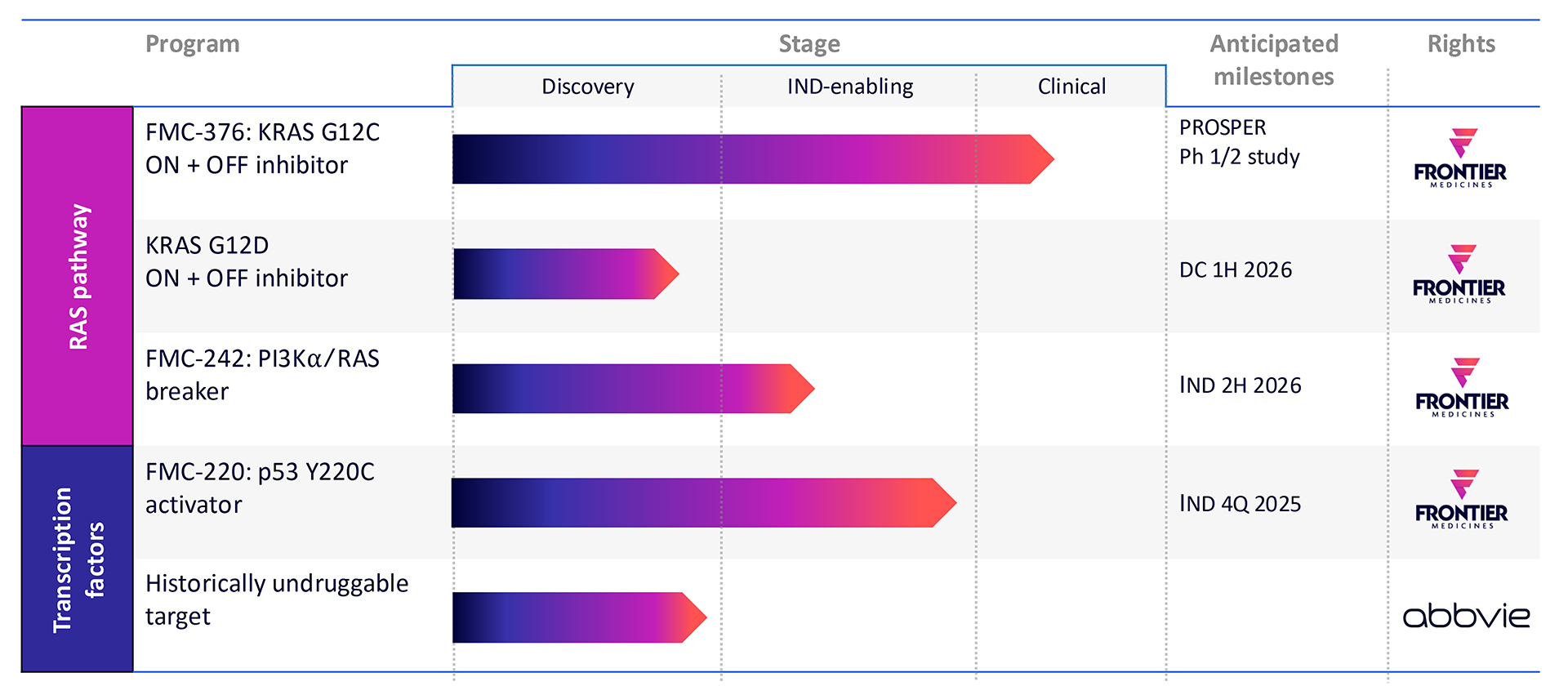Precision Pipeline
Industry-leading covalent medicine pipeline.
Our pipeline of novel precision drug candidates represents a new era for targeting the human proteome with covalent small molecule therapies.
Frontier is focused on applying covalent fragment-based drug discovery to drive the development of small molecule covalent drugs against intractable targets.
Fragment-based drug discovery has become mainstream over the past 20 years because fragments allow for a more thorough and efficient search of chemical space. Fragments are effective in defining the elements of target recognition in proteins and provide superior starting points for drug discovery.
At Frontier, we are applying a twist to traditional fragment-based drug discovery approaches by incorporating covalent chemistry into the design of our proprietary chemical library and drug programs.
Covalent drugs bind to the target of interest, then form a chemical bond with the target. This strategy provides an advantage when targeting proteins with poorly defined pockets or disordered domains, providing an anchor point to build potent and selective drug molecules. Covalent drugs form a long-lived complex with a target. By binding to a precise site on a target of interest, covalent drugs can inhibit the protein’s disease-related activity. Covalent drugs include aspirin, ibrutinib, omeprazole, sotorasib, and penicillin.
The collaboration with AbbVie expands the use of Frontier’s technologies to immunology, as well as the development of next generation targeted protein degraders with novel E3 ligases as recruiters. The goal with targeted protein degraders is to selectively remove pathological proteins by causing their physical destruction using the cell’s own machinery. This is based on recent breakthroughs in the understanding of the cellular factories controlling protein production and degradation.


